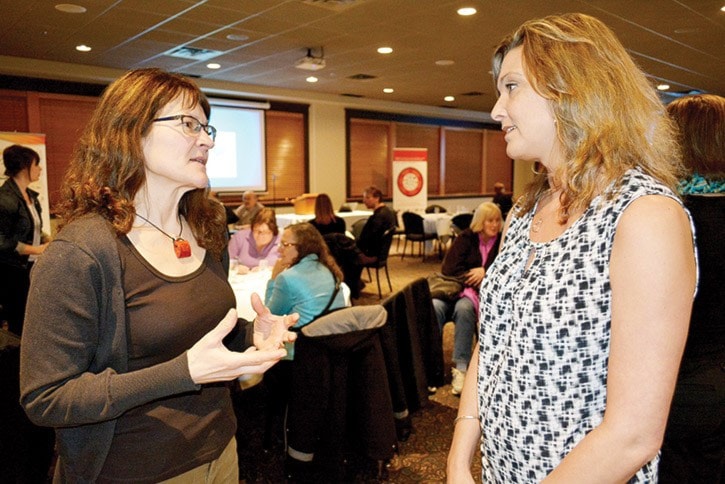Last week Communities That Care (CTC) released a community profile report authored by Anne Burrill of ChangeMaker Consulting during an event held at Signal Point.
The report outlines data collected from prevention needs assessment surveys of youth done in 2009 and 2015 and the work individuals and organizations have done to respond.
Communities That Care was formed in 2008 after the RCMP identified serious youth gang issues in Williams Lake.
“We were approached by the Youth Justice Secretariat and provided with some money but only if we agreed to work together on this issue,” CTC facilitator Bullinger said. “Fifty leaders were invited and said ‘yes’ that they wanted to work together and make a change.”
The first survey in 2009 was completed anonymously by 70 per cent of the students from Grade 6 to 12 and administered by School District 27 counsellors and teachers.
From the information they received, CTC decided to implement some programs.
One of those was a positive action program, which the school district took a leadership role in helping deliver.
Members of the CTC then met once a month to discuss any emerging issues and see how they could support each other in addressing the problems.
“It sounds easy, but it was hard because people get tired and the process is hard, so I want to commend the perseverance of our community to see it through the hard times and agree to do the second survey in 2015,” Bullinger said.
As she presented an overview of the community profile, Burrill said by comparing the two surveys, CTC was able to see that things were changing for the better.
In 2009, 60 per cent of kids scored as having high risk factors, while in 2015 the number dropped to 55 per cent.
“Five per cent does not sound like much but when you are talking about a population of over 1,200 kids, five per cent is a significant drop over a five year period,” Burrill said.
The percentage of students reporting having ever been attacked went from 14.2 per cent in 2009 to just over five per cent in 2015, while gang involvement decreased from 7.5 per cent in 2009 down to 3.4 per cent in 2015.
The surveys also showed that in 2009 kids had a 60 per cent level of high protection and in 2015 the percentage rose to 67 per cent.
“If they are attached to their family, if they have a belief in right or wrong, these are some of the things that protect kids from some of the risks they may not have control over such as poverty,” Burrill said.
However, there was no significant change, in the priority risk factor around parents attitudes toward drug and alcohol use and anti-social behavior.
“Beliefs about when or if it is appropriate for parents to introduce young people to alcohol, and what constitutes healthy use are value laden and sometimes culturally influenced,” Burrill said, noting family domain has been a main discussion item.
One of the alarming things for the CTC was the learn that 50 per cent of students in Grades 10 to 12 reported having depressive symptoms in the 2015 survey.
Moving forward CTC will host a community planning session on April 7, 2017, to address the problem, Bullinger said.
The group has also set some targets for 2020 and hope to survey students again, Burrill said.
